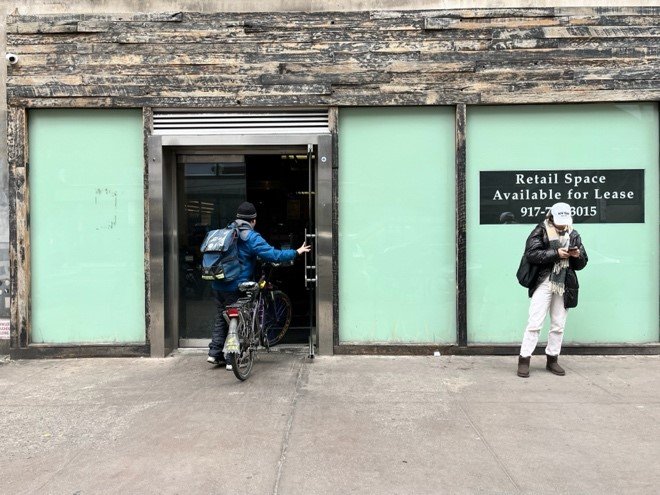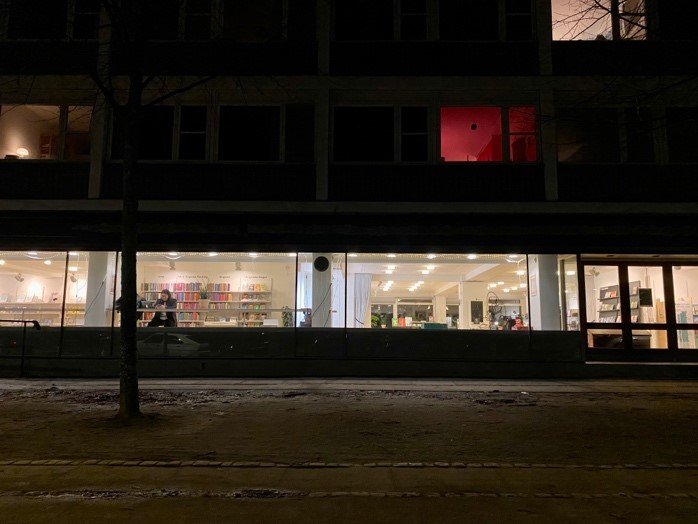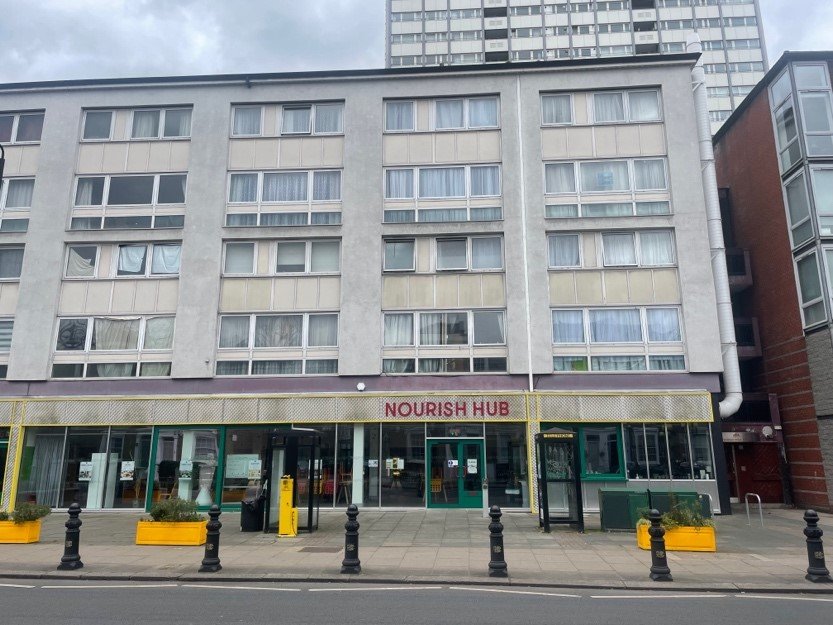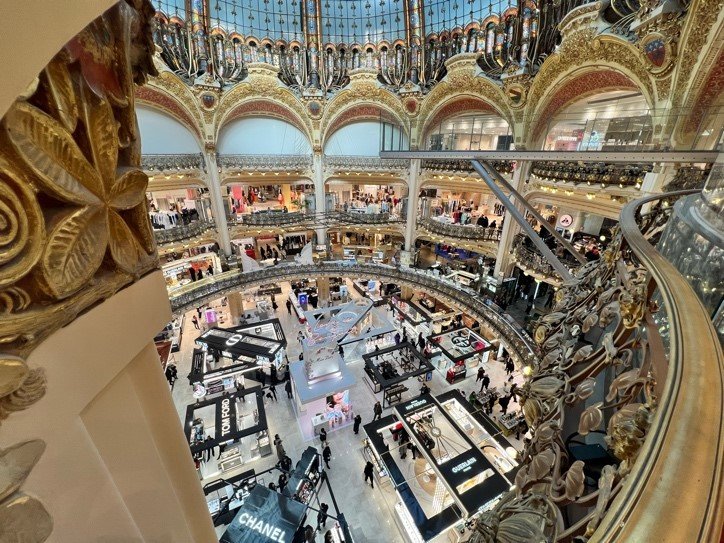Lost and Found in Public Space
By Ian Dull, Gabrielle Borenstein, Maria Salgado, Astrid Ingemann Breitenstein, and Alexis Jakubowicz
In this series of vignettes, people at ReD reflect on the role of physical space and its impact on their personal sense of belonging.
Belonging often conjures up images of close family and friends, or tight-knit friendship groups – not to mention shared histories, common traits, the warm-and-fuzzies of togetherness. But that represents only a fraction of where and how we belong. We also belong at local dive bars and coffee shops; on the train during our morning commute; we feel a part of something in the crowd at a concert. And we can just as easily not belong: we can feel uneasy in offices or government buildings, downtrodden in grim subway stations, pushed out of once communal spaces or out of place in a luxury boutique or haughty hipster cocktail bar. While these moments of ‘background belonging’ or un-belonging might seem trite, they are incredibly important: extensive research has demonstrated how belonging locally, through weak social ties, makes us happier and more empathetic by widening our worldview(1).
But what draws the line between success and failure of a space to enable belonging isn’t as obvious as it might seem: is it something in the physical dimensions that makes it better suited for belonging? Does it just come down to the specific fan or bartender you happen to run into?
Social scientists and architects have long observed how the spaces we occupy shape what we do in them – how the physical fabric of a space influences, intentionally or unintentionally, whether we’re friendly or combative, productive or relaxed, and yes, whether or not we belong. With belonging – or its absence – emerging as a growing societal concern, and increasingly a consideration for brands, retailers, events, governments, and NGOs, and many others, we now need to think even more intentionally about the power of physical spaces to amplify belonging.
Meanwhile, public places are back. After the seesaw of opening-up and locking-down, many people are back to prior routines: the US census bureau(2) reports that appetites for dining and drinking out are surging, with spending up more than 40 percent from 2020 to 2023. Similarly, Live Nation(3), parent company of Ticketmaster, reports they had their highest ever quarterly concert attendance in Q3 of 2022.
Our relationship to space appears to be changing. In ReD’s recent ethnographic research, we are seeing a re-awakening of spontaneous social interactions, collective effervescence, and the ‘background’ belonging that comes with moving through spaces and places alongside others. TikTok-addled young people are now eager to attend PRIDE parades, IRL meet-ups organised by online groups, and in-person concerts to soak in the power of in-person gathering and physical togetherness – and to have something to document and cherish later. Electric vehicle owners are turning charging stations into an opportunity to connect with other drivers – a thousand times more social than the gas station – by virtue of the chance encounters that happen when tethered to a charger for a minimum of 20 minutes. Though fleeting and seemingly superficial, people are looking to places – and the social opportunities they provide – as a solution to the dislocation and disconnection past years have brought.
Physical places become social spaces as they shape behaviour, reinforce social norms and practices, and frame social relations – and we, in turn, layer them with meaning. They have the capacity not only to structure activities but also relationships – between humans and their things, but also among humans. Take the McKibbin Lofts in Bushwick, Brooklyn. Once a factory that manufactured textiles and garments, it evolved into an artist collective – or an art dormitory – known to throw raucous all-night parties for twenty-something year old creatives. As a result of its industrial origins, the layout supported communal gatherings at grand scales for residents and walk-ins alike – the presence of large open spaces and smaller side rooms supports spaces for dancing and those for conversation. This example is but one of many where architectonics foster interactions.
Public spaces and their material configurations can have profound power to orchestrate opportunities for community, togetherness and social connection. Belonging is in crisis for many people today, and public places and the worlds of social ties they open up have the power to be an antidote.
With belonging – or its absence – emerging as a growing societal concern, and increasingly a consideration for brands, retailers, events, governments, and NGOs, and many others, we now need to think even more intentionally about the power of physical spaces to amplify belonging.
The Eiffel Tower: A Beaming Presence in Paris
My first apartment in Paris was a chambre de bonne, or maid’s quarters. Mine was nine square meters and charmless, but cheap; I nicknamed it la bohème. Other than the price, its main redeeming quality was a French balcony at the end, which opened onto a view of other picturesque rooftops. On the first night, I discovered the beam of light from the Eiffel Tower. I couldn’t see the Eiffel Tower itself, only its sweeping light. Even so, many nights, typing away for my third job, I watched the beam go past my window and felt its hulking iron presence like a friend watching me over my shoulder. It was an odd symbol to feel attached to – the most photographed object in the world – when I wanted to be anything but a tourist. I suspect it was because I knew everyone else in Paris occasionally focused on it too, with equal parts wonder and blasé. One night at a friend’s, I realised his kitchen had a similar, but much better view – down a hill with the Tower visible and bathing the whole city in light with each turn. We talked in the open window, and I thought of myself across the city looking at the same light too. – Ian Dull
Plaza Republica: Lost in the Crowd
A gaggle of gringos found themselves in Mexico City during the World Cup and I was one of them. It was game day and we were looking for a lively place to have some breakfast beers. We were directed to the heart of the city, to Plaza Republica where the game was broadcast in the open square. Standing in the sea of green, I was confronted by my overtly outsider status. The space was entirely open, yet the large screen directed everyone’s attention in a near militant fashion. The crowd was entirely comprised of strangers – thousands of them. There were observable codes of conduct – clear rules of engagement for how to act, react, and relate to those around me. For me to belong here would mean a clear assimilation and I was torn. Do I put on the Mexico hat my friend brought for me and take a part of the fervour? I wanted to participate in the camaraderie, be present in the space, high five strangers, shout. Belonging would be easy but it would also be surface level – a lie. After twenty minutes as an awkward bystander, I decided to put on the hat. – Gabrielle Borenstein
NYC Cloud Kitchen: The Anonymous Restaurant
A friend and I went to get takeout when I was visiting New York last year. He found a Thai place on Google Maps, we picked a few dishes, and clicked order, nothing out of the ordinary for two Millennials. But we realised something was off when we showed up: there was no restaurant. Behind two opaque glass doors facing the street lay one giant industrial kitchen, churning out Thai food and burgers, Indian, Italian, Vietnamese – anything a hungry person with a smartphone could want. There were helmetted UberEats riders charging their phones in the waiting area, ten or twelve chargers crowding into a socket as they idled around. It was a ‘cloud kitchen,’ I realised. But it was as far from Cloud 9 as could be – the architectural and culinary expression of choice times convenience times speed. It was strange to see a restaurant – really ten restaurants in one – with no buzz of diners, snarky maître d’, or (seeming) camaraderie in the kitchen. Even ordering takeout, I wanted to visit a restaurant, not a counter. – Ian Dull
The Automated Librarian: An Unexpected Welcome
When I first moved to Copenhagen, I spent my night bike rides home gazing into warmly lit Scandinavian windows. One of these was the façade of a public library. One evening, I spontaneously decided to venture in. I stood in front of two automated sets of doors and made useless gestures until noticing a sign that read “scan your yellow card here”. Inside, I found a community of habitués: a lady returned a book with the help of a self-service system and a retiree read the newspaper. I inspected the place, intrigued by the reigning silence in the absence of a visible authority – there were no staff. As soon as I began reading, an announcement sounded that the library was closing in 15 minutes. I left with a bittersweet impression. At first, I had been startled by the anonymity and lack of human interaction in this automated bubble. However, the simplicity of the ritual, once mastered, granted nearly instant assimilation. There had been no librarian to judge my newcomer demeanour, but a single machine that greeted everyone equally. – Maria Salgado
Nourishing Hub: Designing for Commensality
The colourful murals of the Nourish Hub stand out against the grey façade of the surrounding estate, with the window-panelled front inviting passers-by to peek in at curious activities unfolding within. The Hub’s mission is unique, aimed at breaking down barriers between those in need of help or a free meal, and those who are not. Unlike a traditional soup kitchen or food bank, often held in church halls or opportunistically in other vacant parts of the city, the space is thoughtfully designed for its purpose: communality and commensality across the whole community. Spending many afternoons chatting, eating, and observing at the Nourish Hub I got to know many of my neighbours whom I would likely never had spoken a word to if were it not for our lunches together. I noticed how, forced to face each other as they tuck in, the large communal tables break down the Londoners’ usual aversion to speaking with strangers. Unlike the traditional boundaries that often delineate space in restaurants and other food charities, the hierarchies between the hosts and guests, donors and recipients are challenged and blurred by its design. The kitchen is completely visible from the dining space and conversation often flows across it between the chefs, volunteers and visitors. This buzz of familiarity created, at least for me, a true sense of intimacy, trust and reciprocity rarely present in other hospitality experiences I have had, and many told me, the soup kitchens they otherwise go to. – Astrid Ingemann Breitenstein
Galeries Lafayette: Generational Echoes under the Dome
Growing up in Lyon, I would visit my grandparents in Paris a couple of times a year. One thing my grandfather Francizek liked the most when we came in late fall, was taking us to the Galeries Lafayette. As a Polish immigrant, a Red Army war hero, a concentration camps liberator, and a Jew, being able to take us there and blend in the crowd was an ultimate victory. Fast forward to late 2013. I’m 27, working as an arts editor, called for a job at the newly established Galeries Lafayette Foundation for contemporary arts. Mr. Houzé, whom I’m interviewing, pops into the room. He starts telling me about his grandfather, former CEO of Galeries Lafayette, Resistant and war hero, prisoner at Buchenwald, and Righteous among the Nations. Houzé took me through the origins of the department store founded by his great grandfather Theophile Bader as a universalist promise to democratise “le beau, le bon, le bien”, a promise that is symbolically expressed under the dome of Galeries Lafayette, a home for everything and everyone. I feel the urge to go back from time to time under this massive dome to connect to hear again those various echoes of history. – Alexis Jakubowicz
References
See Granovetter (1973) and Sandstrom & Dunn (2013, 2014) on the importance of weak social ties
Americans Won’t Let Inflation Steal Their Appetite, Richter, 2023
Live Nation Entertainment Reports Third Quarter Results, 2022






